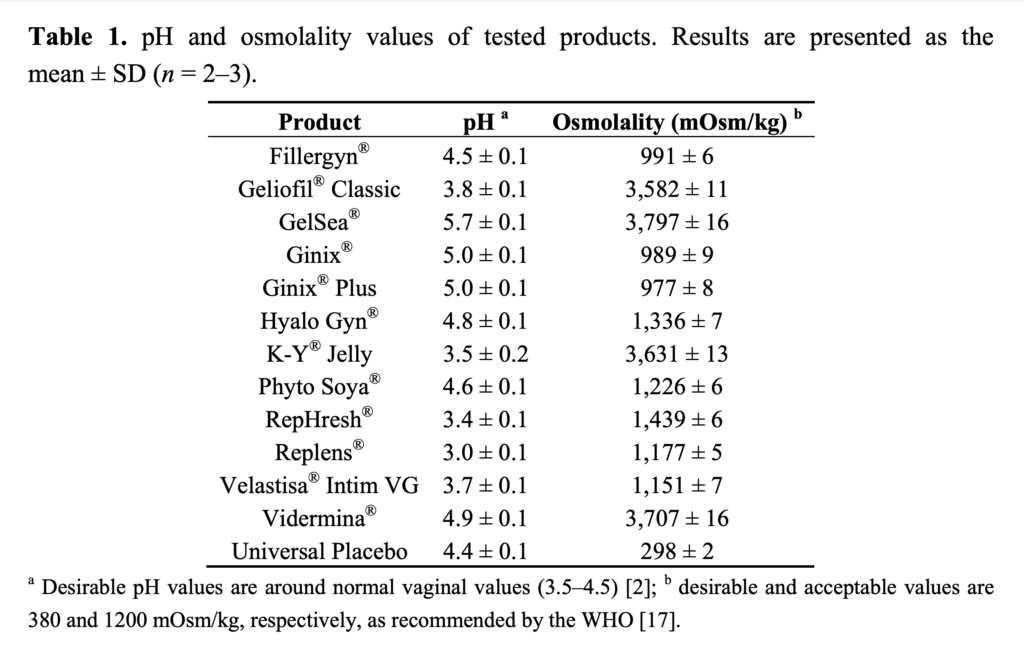Personal lubricants (as opposed to procedural lubricants, such as those used by healthcare workers) are widely used intimate care products that minimize friction when applied to the body, including the vagina. By lubricating the vagina during sexual activity and intercourse and therefore counteracting vaginal dryness, these products are effective at reducing discomfort and trauma to sensitive areas.
The Potential Risks of Personal Lubricant
Due to the sensitivity of vaginal tissue, extra consideration should be taken when designing products for application to the vagina. In fact, the World Health Organization has provided specific characteristics that lubricants should include in order to avoid risks associated with long term use. In particular, they recommend using lubricants with a pH of 4.5 and an osmolality below 1200 mOsm/kg. In other words, the pH and osmolality of lubricants should be compatible with the pH and osmolality of healthy vaginal tissue (the pH of the healthy vagina being 3.8-4.5). Extreme variation of characteristics of lubricants from vaginal tissue can lead to increased likelihood of bacterial vaginosis and sexually transmitted diseases, including but not limited to HIV! Additionally, some lubricants may contain unnecessary and even potentially toxic ingredients that may cause irritation and increase probability of infection. For example, lubricants containing fragrances, parabens, silicones, and disinfectants can disrupt the microbiome of the vagina and lead to poor outcomes including reproductive problems and cancer.
To find the safest lubricant, it is essential to research pH, osmolality, and ingredients prior to use. Determining and excluding lubricants that contain toxic ingredients and vary excessively from a healthy vagina is key to finding a nonirritating product and avoiding potential risks. Please refer to the table below to see pH and osmolalities of several commercially available lubricants (noting how many actually meet the WHO recommendations of a pH of 4.5 and an osmolality below 1200 mOsm/kg)

BIBLIOGRAPHY
- Are Lubricants Safe? Potential Hazards of Lubricants for Women. (n.d.). Women’s Voices for the Earth.
- Cunha et al. Characterization of Commercially Available Vaginal Lubricants: A Safety Perspective. Pharmaceutics. 2014; 6, 530-542.
- Dezzutti et al. Is Wetter Better? An Evaluation of Over-the-Counter Personal Lubricants for Safety and Anti-HIV-1 Activity. PLOS One. 2012; Volume 7, Issue 11, 1-14.
 Richard Hopley, M.D. | 08/10/2022
Richard Hopley, M.D. | 08/10/2022